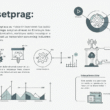In 2021, the market size of mobile app development reached a whopping $127.2 billion and is expected to surpass $583 billion by 2030. There’s no doubt, the demand for cutting-edge technology solutions continues to soar. This is why, there’s the need to make smart choices of tech stack for your mobile app development project.
In this blog, we will explore the best tech stack for your mobile application that will make all the difference on the market. In particular, we’ll expand on Flutter, React Native, Java, Kotlin, and Xamarin.
How to Choose the Right Tech Stack for Your Mobile App: Things to Consider
Before jumping into the topic, let’s have a look at things that may affect your choice of best tech stack for mobile app development.
Platform: Building mobile applications for certain operational system (Android or iOS) requires a different tech stach. The optimal option is to opt for tech stack that wold empower for cross-platform mobile app development.
Features and functionality: Simple app with basic features and functionality will require a more complex tech stack. More complex apps such as games or augmented reality may need a more powerful stack.
Budget available: your financial capacity as well as time and expertise available will affect the choice of tech stack for your mobile app. While native-like applications may appear more expensive and time-consuming, hybrid applications are faster and more affordable to deliver.
Maintenance and Scalability: consider tech stack that will not hold you back as your traffic starts to grow. Give preference to tech stacks supporting stable system architecture.
Best Tech Stack for Building a Mobile Application
Flutter
Flutter is an open-source UI software development kit launched by Google. Flutter allows developers to build natively compiled applications for mobile, web, and desktop from a single codebase. The primary programming language used in Flutter is Dart. Flutter’s architecture enables high-performance rendering, resulting in smooth and fast user experiences. In addition, Flutter allows developers to instantly view changes made to the code without reloading an entire app which improves the efficiency of the development and maintenance process.
React Native
React Native, developed by Facebook, is another popular cross-platform framework for building mobile apps. React Native allows developers to create mobile apps using JavaScript and React. Similar to Flutter, React Native offers live reload, allowing developers to see changes instantly. Besides, with a vast and active community of developers, React Native programmers can access numerous third-party libraries and resources to enhance app development.
Java
Java has been a long-standing favorite for Android app development. This is not strictly a tech stack on its own, but rather a programming language used in combination with Android Studio and the Android SDK. Java is a robust, stable, and mature programming language reliable for developing large and complex applications. In addition, Java developers benefit from an extensive collection of libraries and resources, offering developers plenty of tools to streamline the development process.
Kotlin
Kotlin, developed by JetBrains, is a modern programming language mainly designed to build Android apps. Kotlin fully interoperates fully with Java frameworks. This allows kotlin developers to use existing Java libraries and code while taking advantage of Kotlin’s modern features. Kotlin is still an evolving programming language. Therefore, get ready for some issues with supporting Android development devices.
Xamarin
When speaking of mobile app development, it’s impossible to ignore Xamarin. This is a cross-platform framework owned by Microsoft that enables developers to build native-like performing mobile apps for iOS, and Android. Apart from building applications for mobile, with Xamarin programmers can build apps for Apple and Android wearables as well.




